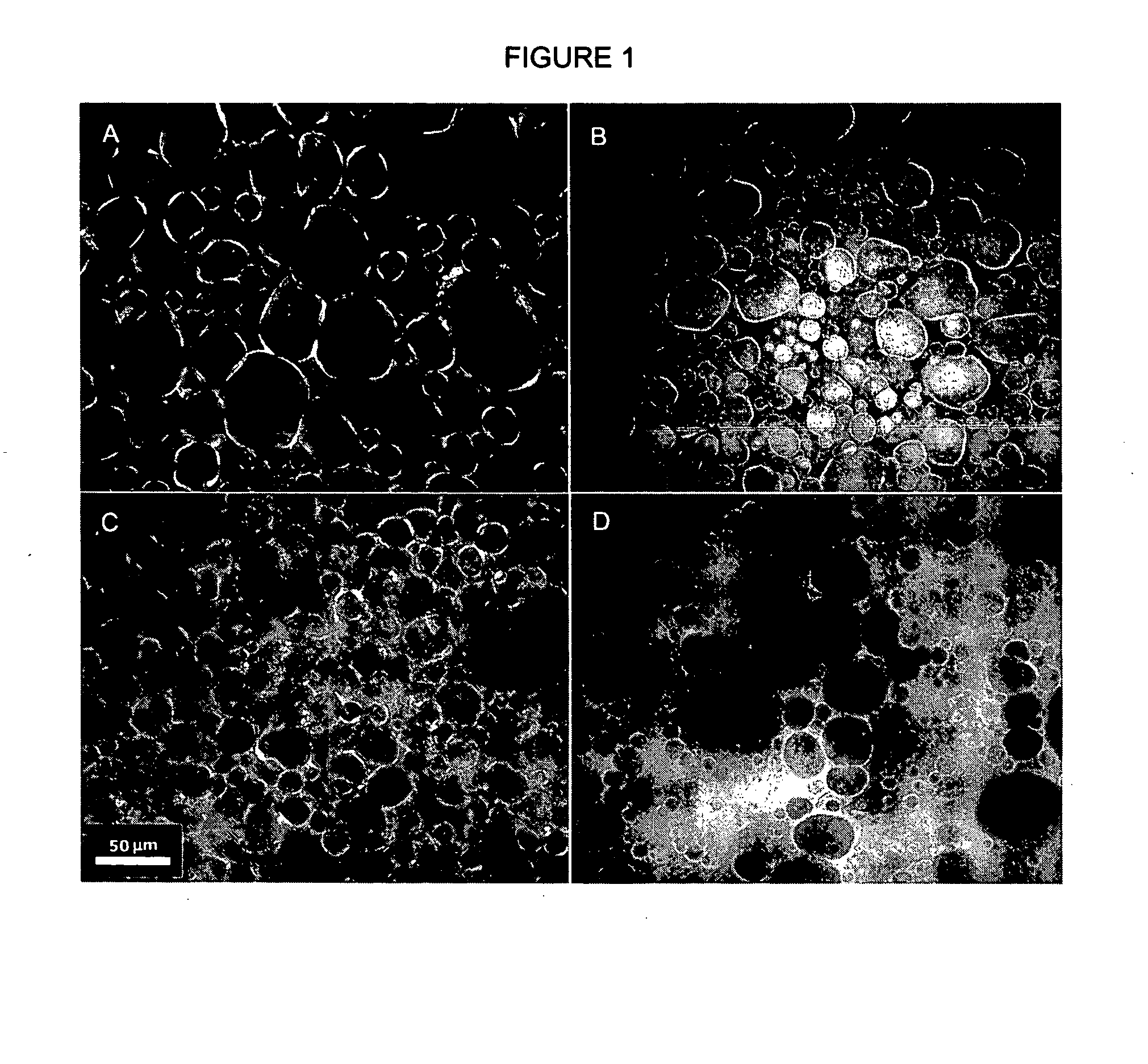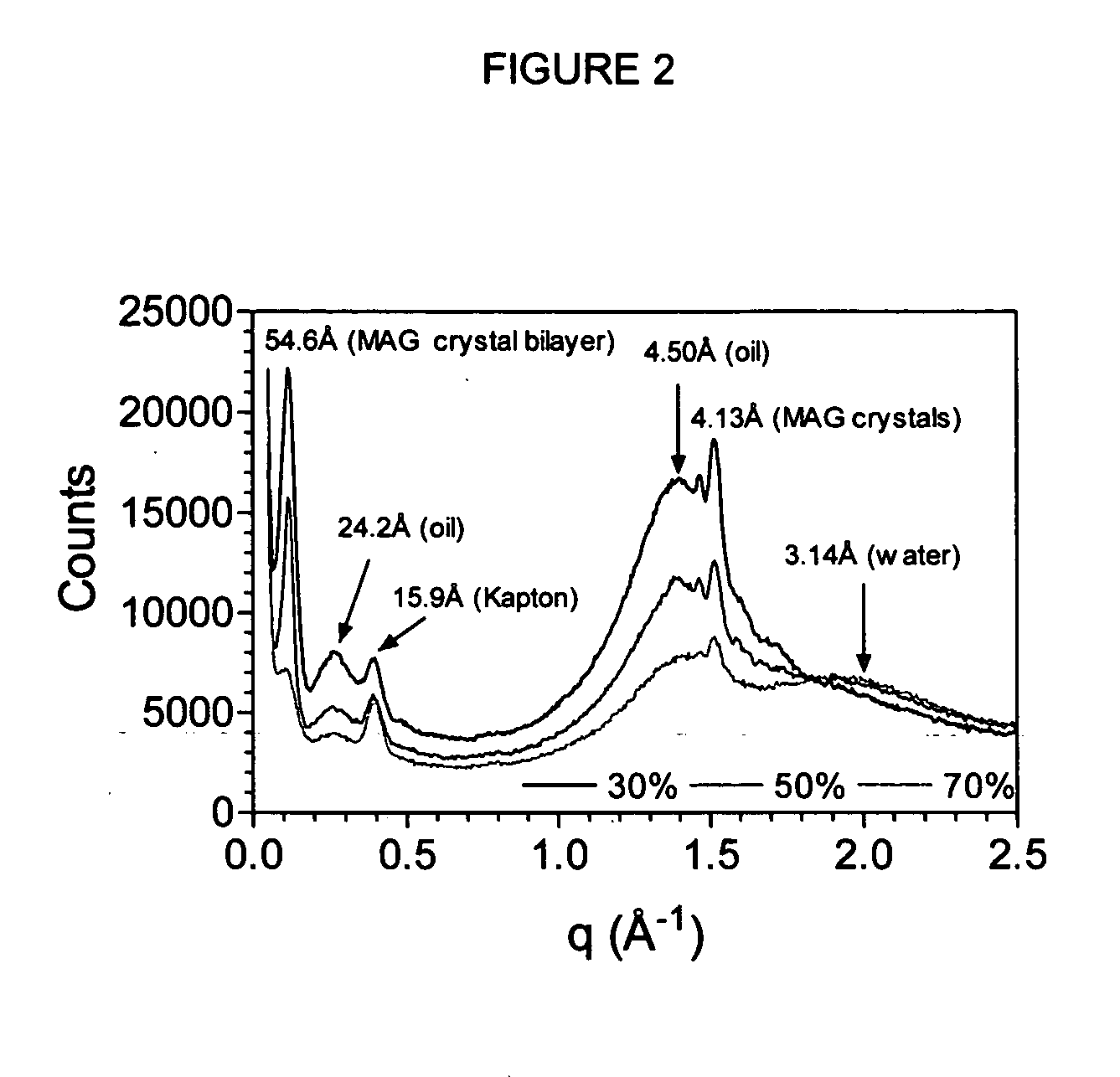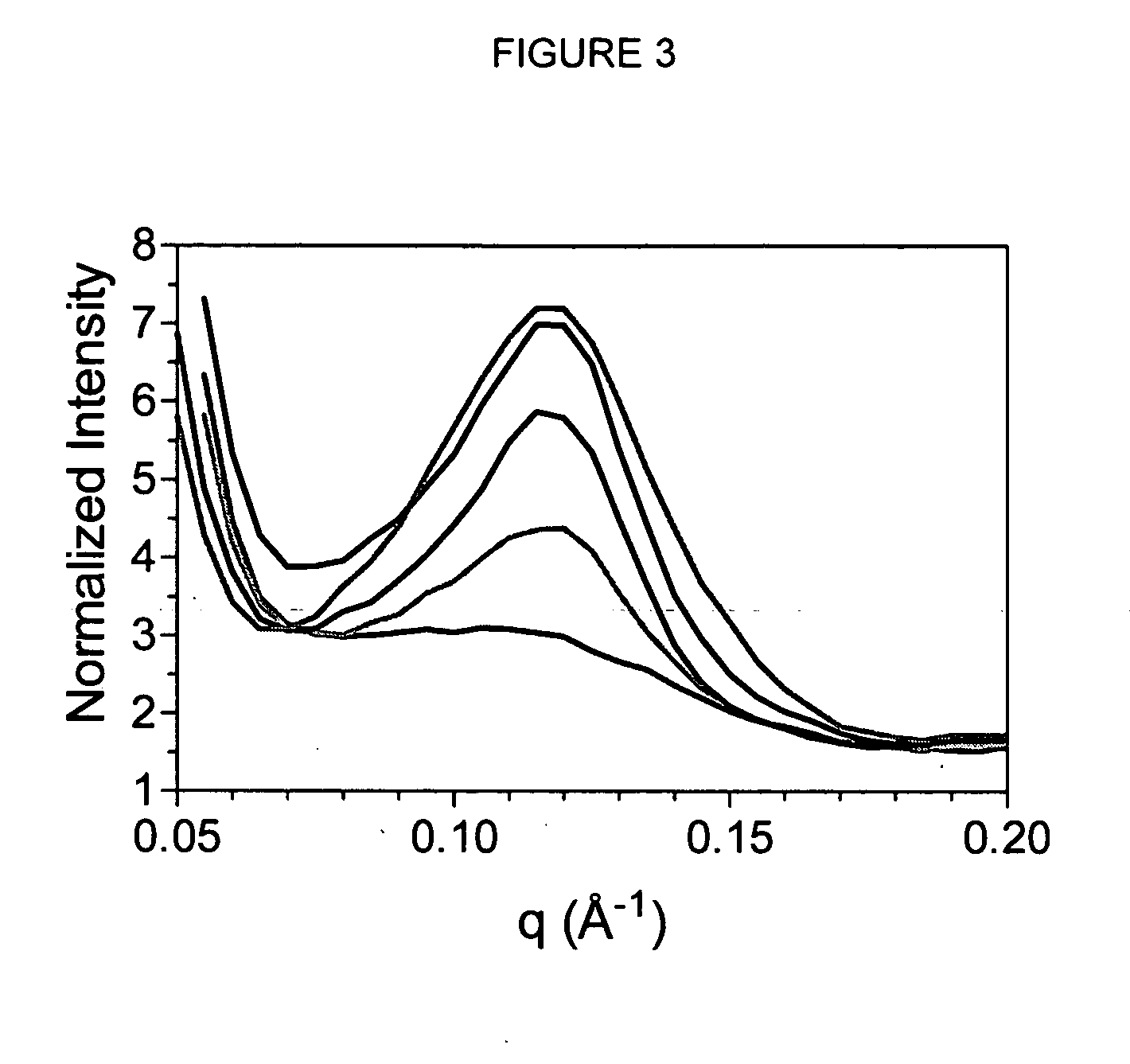Food product
- Summary
- Abstract
- Description
- Claims
- Application Information
AI Technical Summary
Benefits of technology
Problems solved by technology
Method used
Image
Examples
example 1
[0085] Distilled monoacylgycerols (MAG's) and anionic surfactant were provided by Danisco (Kansas, Mo.). They included Grinsted® sodium steaoryl lactylate (SSL) P55 anionic surfactant, and Dimodan® HS K-A (10% monopalmitin, 90% monostearin). Sodium hydroxide (2N NaOH) was obtained from Fischer (St. Louis, Mo.), vegetable oils (corn, canola, sunflower, soybean, peanut) were purchased in a local supermarket, and deionized water was of milliQ grade.
[0086] A 10% (w / w) stock of MAG in vegetable oil—all oilsperformed equally well—was prepared by melting 10 g of the solid MAG (m.p. ˜73° C.) and 500 mg of the SSL powder in 89.5 g of oil at 85° C. for 30 minutes and cooled to 75° C. Appropriate volume fractions of 75° C. alkaline deionized water (5 drops of 2N NaOH in 100 mL), in the range 20% to 70% (v / v), were then added to the MAG-oil stock in a glass bowl heated to 75° C. The material was mixed with the aid of an electric hand mixer until a macroscopically homogeneous...
example 2
Dynamic Shear Rheology
[0087] Dynamic rheological measurements were carried out with a TA Instruments AR2000 rheometer (TA Instruments, New Castle, Del., USA) at 20° C. Approximately 3 g of monoglyceride gels were gently spread on the temperature-controlled (Peltier element) rheometer base. A 60 mm flat acrylic plate was lowered onto this film until a gap size of 1 mm was attained. This was immediately followed by strain sweeps from to 0.003% to 0.80% shear strain at a frequency of 1 Hz. The increase in strain was logarithmic with a sampling frequency of 10 points per decade. Four samples were analyzed for each mixture and the average and standard deviation reported. At least three separate sets of experiments were conducted.
example 3
[0088] Images were acquired using a Leica DM RXA2 upright microscope (Leica Microsystems AG, Bannockbum, Ill., USA) equipped with epi-polarized reflection illumination and a Retiga 1300 monochrome camera (Qlmaging, Burnaby, B.C., Canada). Three samples of each mixture were gently spread under a coverslip within the first 10 minutes of setting and examined using a 40× objective in polarization or fluorescence modes. For the fluorescence experiments, Nile Red and Rhodamine dyes were dissolved in either the oil (Nile Red) or the water phase (Rhodamine) prior to mixing. The final concentration of the dye was 0.05% (w / w) in the system. The filer L5 filter cube from Leica was used (exc: BF 480 / 40 nm; dichroic mirror; em: BF 527 / 30 nm). All images were acquired and archived as single, 1280×1024 pixel, 8 bit, untagged documents. Magnification bars and labels were added using Adobe Photoshop 5.5. At least three separate sets of experiments were conducted.
PUM
 Login to View More
Login to View More Abstract
Description
Claims
Application Information
 Login to View More
Login to View More - Generate Ideas
- Intellectual Property
- Life Sciences
- Materials
- Tech Scout
- Unparalleled Data Quality
- Higher Quality Content
- 60% Fewer Hallucinations
Browse by: Latest US Patents, China's latest patents, Technical Efficacy Thesaurus, Application Domain, Technology Topic, Popular Technical Reports.
© 2025 PatSnap. All rights reserved.Legal|Privacy policy|Modern Slavery Act Transparency Statement|Sitemap|About US| Contact US: help@patsnap.com



